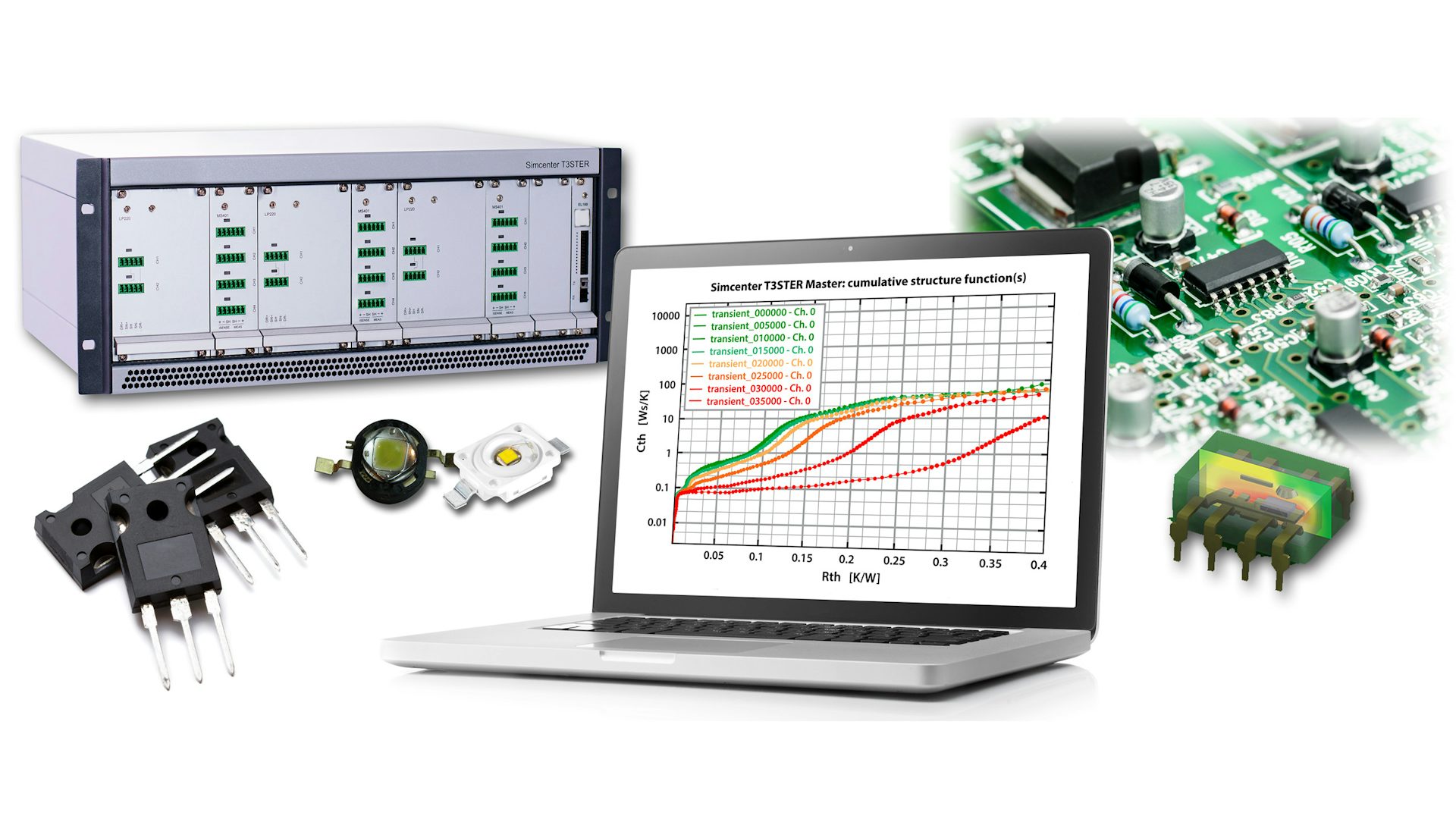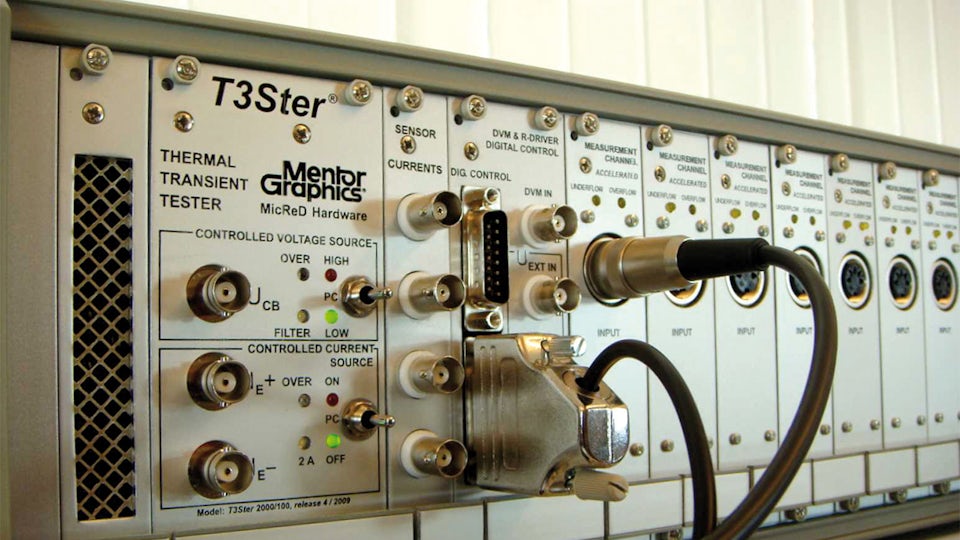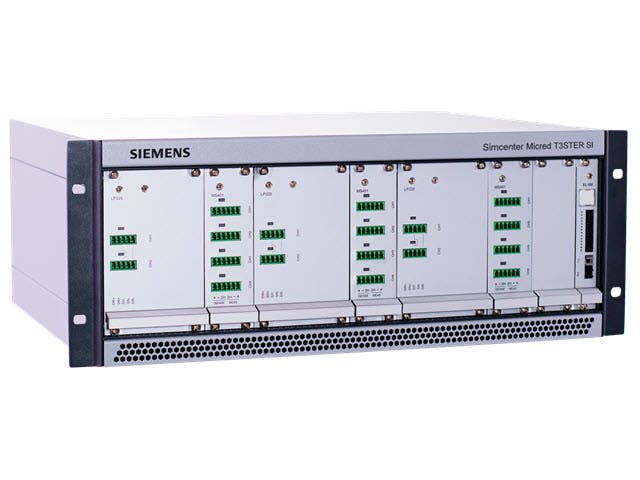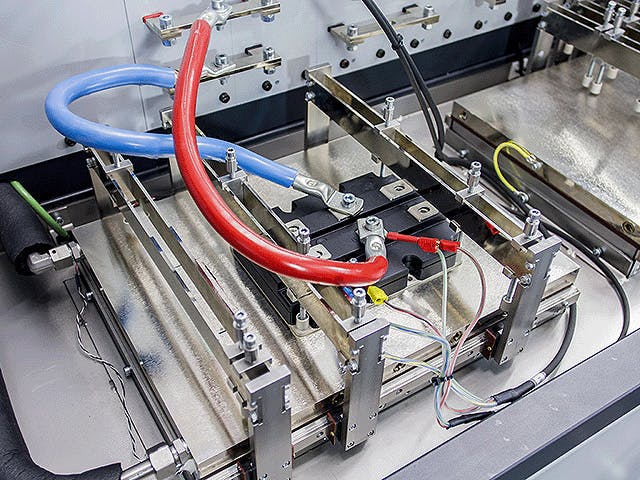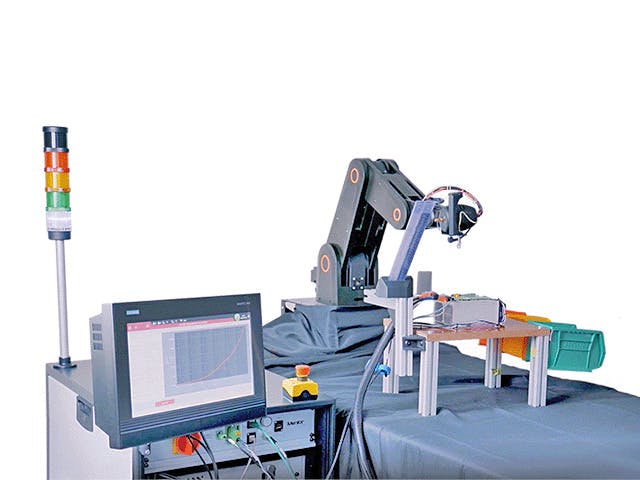La famiglia di soluzioni hardware per la caratterizzazione termica offre ai fornitori di componenti e sistemi la possibilità di testare, misurare e caratterizzare termicamente in modo accurato ed efficiente pacchetti di circuiti integrati a semiconduttore, LED singoli e allineati, pacchetti impilati e multi-die, moduli elettronici di potenza, proprietà dei materiali di interfaccia termica (TIM) e sistemi elettronici completi.
Le nostre soluzioni hardware misurano direttamente le curve effettive di riscaldamento o raffreddamento dei pacchetti di dispositivi a semiconduttore, in modo continuo e in tempo reale, piuttosto che comporle artificialmente dai risultati di diversi test individuali. In questo modo, la misurazione dell'effettiva risposta termica transitoria è molto più efficiente e accurata e consente di ottenere metriche termiche più precise rispetto ai metodi di calcolo dello stato stazionario. Le misurazioni devono essere eseguite una sola volta per campione, non c'è bisogno di ripeterle, e deve essere fatta una media, come con i metodi di calcolo dello stato stazionario.
Migliorare la progettazione e l'affidabilità termica dei componenti elettronici con test e simulazione
Per progettare moduli di potenza affidabili, in applicazioni che spaziano dall'elettrificazione dei veicoli al trasporto ferroviario e al settore aerospaziale fino alla conversione di energia, la gestione termica, sia a livello di componente sia di modulo, deve essere valutata attentamente durante la fase di sviluppo.
